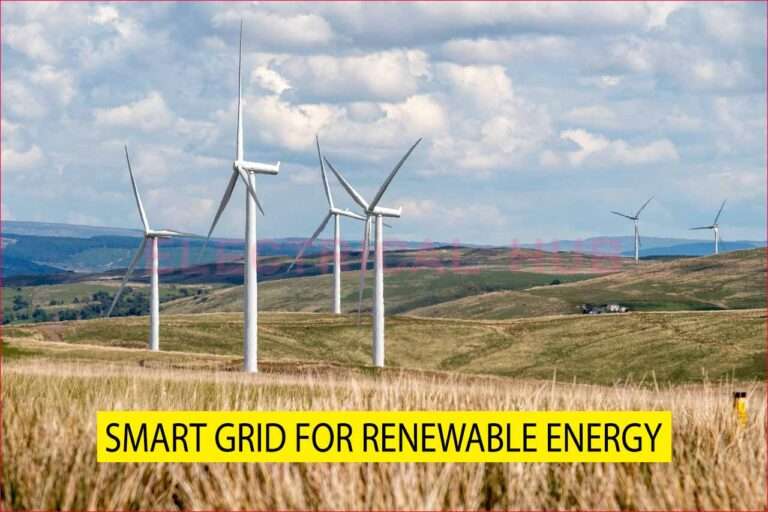Loan for Solar Panel SBI
The demand for renewable energy is growing fast in India. One of the easiest ways to adopt clean energy at home is by installing solar panels. However, the initial cost can be high. This is where loan for solar panel SBI becomes a great solution. The State Bank of India (SBI) offers solar loans that make it easier for individuals and businesses to install solar systems without financial stress.
The scheme is a part of SBI’s green initiative. It supports clean energy goals and makes solar technology more accessible. Let’s explore how this loan works, who can apply, what are the benefits, and the technical aspects you should know.
What is Loan for Solar Panel SBI?
The loan for solar panel SBI is a financing option provided by the State Bank of India. It allows homeowners, housing societies, and small businesses to get funding for installing grid-connected rooftop solar systems. These loans are available under SBI’s Home Loan and SME Loan products with a special focus on renewable energy solutions.
SBI is among the top lenders in India promoting green finance. Through its solar loan scheme, the bank helps reduce carbon emissions and energy bills for its customers.
Key Features of Loan for Solar Panel SBI
Understanding the features of this loan helps you plan better. SBI’s loan product for solar panels includes flexible repayment terms, low interest rates, and higher loan limits.
Here is a table showing the key features:
| Feature | Description |
|---|---|
| Loan Amount | Up to ₹10 lakhs (for residential users) |
| Interest Rate | Starts from 7.40%* p.a. |
| Repayment Period | Up to 10 years |
| Processing Fees | Nil or minimal (depending on applicant profile) |
| Type of Solar System | Grid-connected rooftop systems |
| Security/Collateral | May be required for large loan amounts |
| Subsidy | Government subsidy under MNRE scheme available |
*Interest rates may vary depending on applicant’s credit profile and bank policy.
Who Can Apply for Loan for Solar Panel SBI?
The loan for solar panel SBI is open to a wide group of applicants. If you are a salaried employee, self-employed person, or a housing society, you can apply. Even micro, small, and medium enterprises (MSMEs) are eligible under the SME solar loan product.
Individual homeowners are the most common applicants. If you own your house and want to reduce your electricity bill, this loan is for you.
The application process is straightforward. Basic KYC documents, income proof, property documents, and the solar project estimate are required. If you are applying through a solar EPC contractor, SBI may also need a copy of their agreement with you.
Why Choose SBI for Solar Panel Loans?
SBI is a trusted name in India’s banking sector. Choosing the loan for solar panel SBI gives you access to reliable support and quick approvals. The bank is also partnered with many certified solar panel installers under the MNRE guidelines.
Other benefits include transparency in terms, fixed EMI options, and easy top-up facilities if your energy needs increase. The bank ensures that only certified solar components are used, which guarantees long-term system performance.
The solar loan from SBI is aligned with India’s mission to achieve 500 GW of non-fossil fuel capacity by 2030. That means when you choose this loan, you are not just saving money but also contributing to a cleaner planet.
Technical Details of SBI Solar Loans
There are several technical points to understand before applying for the loan for solar panel SBI. SBI funds only grid-connected rooftop systems. These are solar systems that are connected to the main electricity grid. They reduce your electricity bill by exporting excess power to the grid.
Let’s look at some technical insights that matter:
- System Capacity: Loans are generally offered for systems between 1 kW and 10 kW for residential users.
- Solar Panel Type: Only MNRE-approved solar modules are financed.
- Efficiency: Most systems have 15-20% efficiency.
- Payback Period: Usually 5 to 7 years based on energy savings and subsidy.
Here is a simple technical table:
| Parameter | Typical Value for Residential Solar System |
|---|---|
| Panel Type | Polycrystalline / Monocrystalline |
| Inverter Type | String Inverter / Microinverter |
| Capacity | 3 kW to 10 kW |
| ROI (Return on Investment) | 18% to 22% |
| Lifespan of Panels | 25+ years |
Before applying, you must get a solar assessment of your roof. This helps in deciding the right capacity and estimating monthly savings.
Government Subsidy and Loan for Solar Panel SBI
The Ministry of New and Renewable Energy (MNRE) offers subsidies for rooftop solar installations. This subsidy can reduce your total project cost by up to 40% for systems under 3 kW, and 20% for systems between 3 and 10 kW.
SBI loans can be combined with the subsidy benefit. The bank calculates your eligible loan amount after factoring in the subsidy. This means lower EMI and a shorter loan tenure.
To claim the subsidy, the solar installer must be registered with the DISCOM and the installation must be done through the national solar rooftop portal.
EMI Calculation for Loan for Solar Panel SBI
Understanding your EMI is important. Let’s take an example to show how much you’ll pay per month.
| Loan Amount | Tenure | Interest Rate | Monthly EMI |
|---|---|---|---|
| ₹2,00,000 | 5 years | 7.50% | ₹4,018 |
| ₹3,00,000 | 7 years | 7.40% | ₹4,623 |
| ₹5,00,000 | 10 years | 7.60% | ₹5,944 |
Use SBI’s online EMI calculator or visit your nearest branch for exact calculations based on your profile.
Application Process for Loan for Solar Panel SBI
Applying for the loan for solar panel SBI is simple and can be done in both online and offline modes. The basic steps include:
- Submit the application form with documents.
- Provide solar system quotation and site assessment report.
- Await bank inspection and eligibility verification.
- Get sanction letter and install the system.
- Loan is disbursed to installer or directly to the applicant depending on agreement.
You can also apply through SBI’s YONO app or visit the solar loan desk at selected branches.
Eligibility and Documentation
To get approval for the loan for solar panel SBI, you need to meet basic eligibility criteria and provide supporting documents. These include:
- Age: 21 to 70 years.
- Steady source of income.
- Ownership proof of the property.
- Quotation from approved solar vendor.
- KYC documents: Aadhaar, PAN, Address Proof.
- Income Proof: Salary slips, ITRs, or bank statements.
For housing societies and MSMEs, additional registration and financial documents may be required.
Advantages of Taking SBI Solar Loan
Let’s understand why SBI’s solar loan stands out in the market.
- Lower Interest Rates: Competitive compared to personal loans or credit card financing.
- Government-Linked: Works with MNRE for subsidy integration.
- Eco-Friendly Investment: Promotes green energy.
- Long-Term Savings: Reduced electricity bills for 25+ years.
- Improves Property Value: Homes with solar panels are more attractive in real estate.
Unlike personal loans, these are specifically designed for solar purposes, which makes the terms favorable.
Conclusion
Opting for a loan for solar panel SBI is a smart move if you’re planning to shift to solar power. It reduces your dependency on the grid, cuts your power bill, and supports environmental goals. The SBI loan provides flexible terms, low interest, and quick processing.
With rising electricity costs and climate concerns, solar power is no longer a luxury. It is a necessity. SBI’s solar financing brings this clean energy within reach of every Indian household and business.
If you’re serious about going solar, explore the SBI solar loan today. Visit your nearest branch or consult a registered solar installer for a free site survey. The sun is shining, and with SBI’s support, so is your future.
Follow Us on Social:
Subscribe our Newsletter on Electrical Insights to get the latest updates in Electrical Engineering.
#SolarLoan, #SBISolarLoan, #SolarPanelFinancing, #GoSolarWithSBI, #SustainableEnergyLoan, #GreenLoanIndia, #RenewableEnergyLoan, #SolarSubsidyIndia, #SBIHomeLoan, #SolarPowerIndia, #CleanEnergyLoan, #SolarLoanScheme, #SBIGreenInitiative, #EcoFriendlyLoan, #SolarPanelSubsidy





